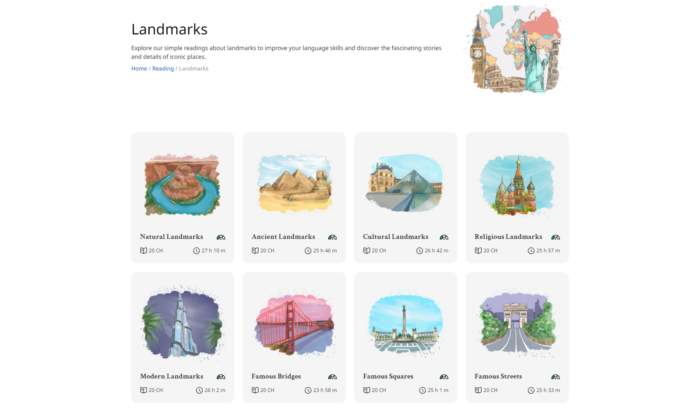The LanGeek Reading Section is a feature designed to enhance language learning by offering context-rich reading passages. It serves as a tool for learners to practice vocabulary and grammar in real-world contexts, following the principles of the Input Hypothesis. This hypothesis, widely recognized in language acquisition theory, posits that learners improve most effectively when exposed to material slightly above their current level of proficiency. Through structured reading exercises, learners can engage with texts that balance familiar and new content, helping them learn new words while reinforcing what they’ve already studied.
Purpose of the Reading Section
The primary objective of the LanGeek Reading Section is twofold:
- Learning Words in Context: Unlike rote memorization, context-based learning allows words to be understood through their usage within a sentence or paragraph. This helps learners grasp the meaning and application of new vocabulary naturally.
- Reinforcing Existing Knowledge: Reading familiar words in different contexts strengthens recall and shifts them from passive recognition to active use. By seeing words repeatedly in meaningful contexts, learners are more likely to remember and correctly apply them in conversation or writing.
Features and Structure
The Reading Section is organized into categories based on two main factors: level and topic. This organization is designed to meet learners’ varying needs and interests.
- Level-Based Categorization:
- Elementary (A1-A2): Basic texts with simple vocabulary and straightforward grammar structures. These are ideal for beginners, covering topics like daily activities, family, and common objects.
- Intermediate (B1-B2): More complex passages with a wider range of sentence structures and vocabulary. These texts introduce cultural aspects, history, and social issues, helping learners transition to more advanced language use.
- Advanced (C1-C2): Detailed readings that include abstract ideas, idiomatic expressions, and nuanced grammar. These texts are aimed at proficient learners looking to refine their language skills further.
- Topic-Based Categorization: Topics are diverse, covering areas like biography, sports, food, culture, and landmarks. Each main topic contains subtopics, allowing for focused exploration. For example, within the “Famous People” category, subtopics include actors, artists, and musicians.
- Interactive Word Features: The reading passages are fully integrated with LanGeek’s vocabulary and grammar tools. Learners can click on any word to access detailed information, such as:
- Lexical Data: Definitions, example sentences, pronunciation guides, and related words.
- Syntactic Information: Part of speech, verb conjugations, plural forms of nouns, and other grammatical details.
- Learning Tools Integration: Words can be added directly to a learner’s Leitner system (Daily Words) for systematic review or to personalized word lists for targeted practice.
 How to Use the Reading Section
How to Use the Reading Section
- Selecting Content Based on Level and Interest: Begin by choosing a reading passage that aligns with your proficiency level. Start with texts at your level and gradually work your way up as you feel more comfortable. Selecting topics that interest you enhances engagement and motivation.
- Engaging with the Text: While reading, click on unfamiliar words to access their meanings, grammatical information, and usage examples. This interactive approach ensures that new vocabulary is not just memorized but understood within its context.
- Tracking Progress and Reinforcing Learning: Words you click on can be added to your personalized word lists or to the Leitner box for spaced repetition practice. After reading, review these words using LanGeek’s vocabulary tools, ensuring they become part of your active vocabulary over time.
Benefits of the Reading Section
The LanGeek Reading Section provides several advantages for language learners:
- Contextual Understanding: Words learned in context are more likely to be remembered and correctly used. The reading passages show how vocabulary and grammar interact naturally, helping learners develop a deeper understanding of the language.
- Enhanced Vocabulary Retention: The integration with the vocabulary tools ensures that newly learned words are regularly reviewed and practiced, moving them from passive recognition to active usage.
- Flexible Learning Paths: The combination of level-based and topic-based categorization allows learners to tailor their experience based on both their proficiency and interests, making the learning process more personalized and engaging.
- Efficient Integration with Other Learning Tools: The seamless connection between the reading section and LanGeek’s other features allows for a holistic learning experience, where reading, vocabulary, and grammar are studied together, reinforcing each other.

